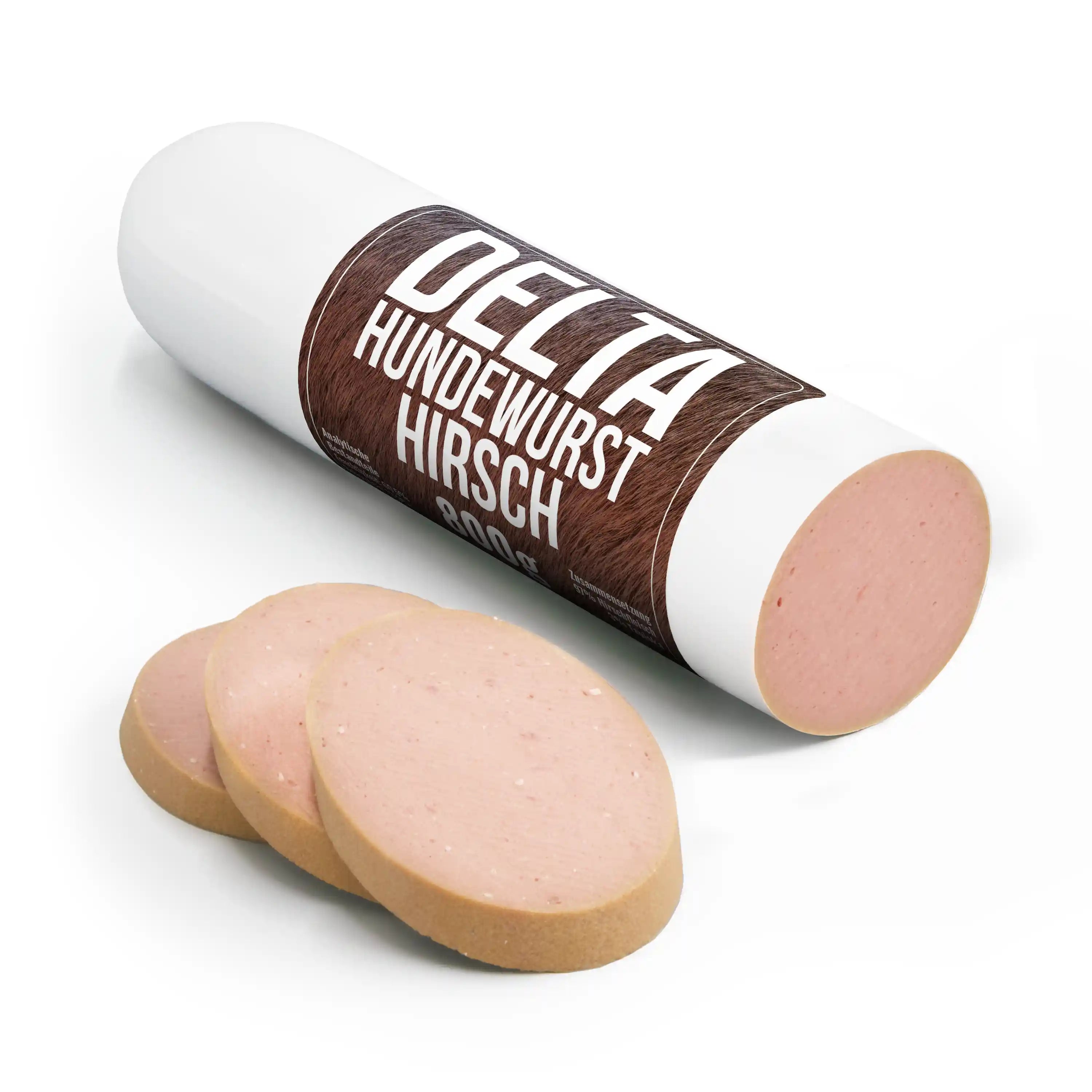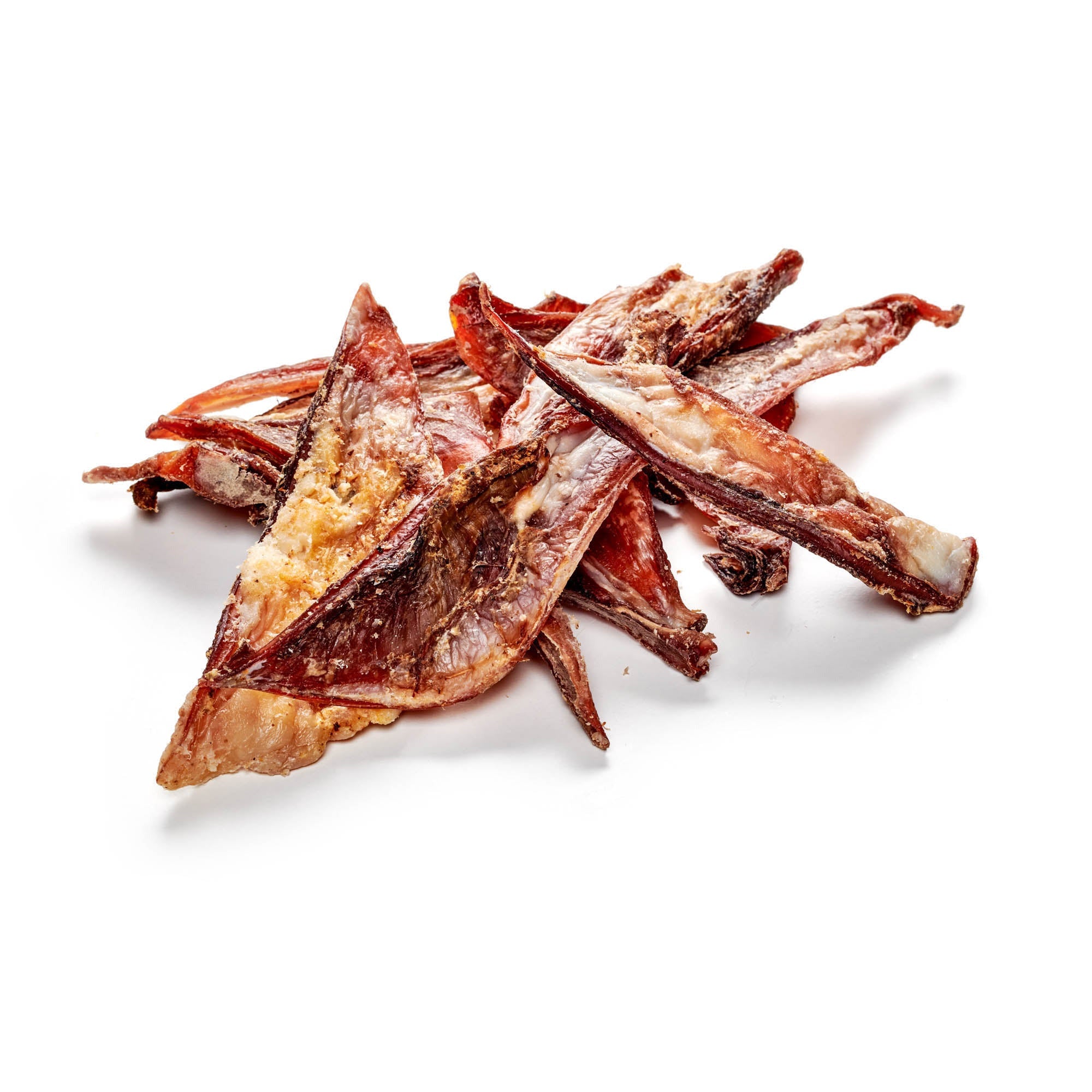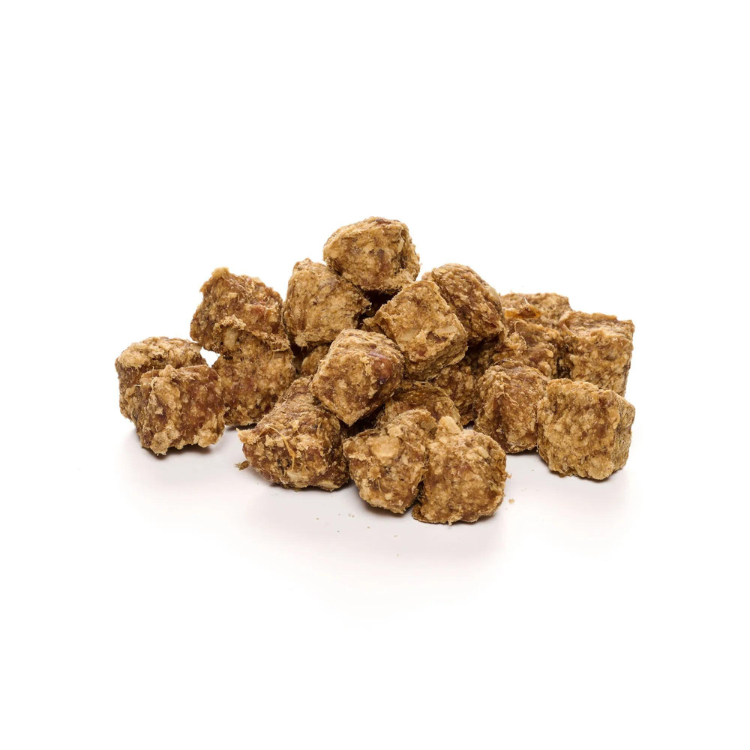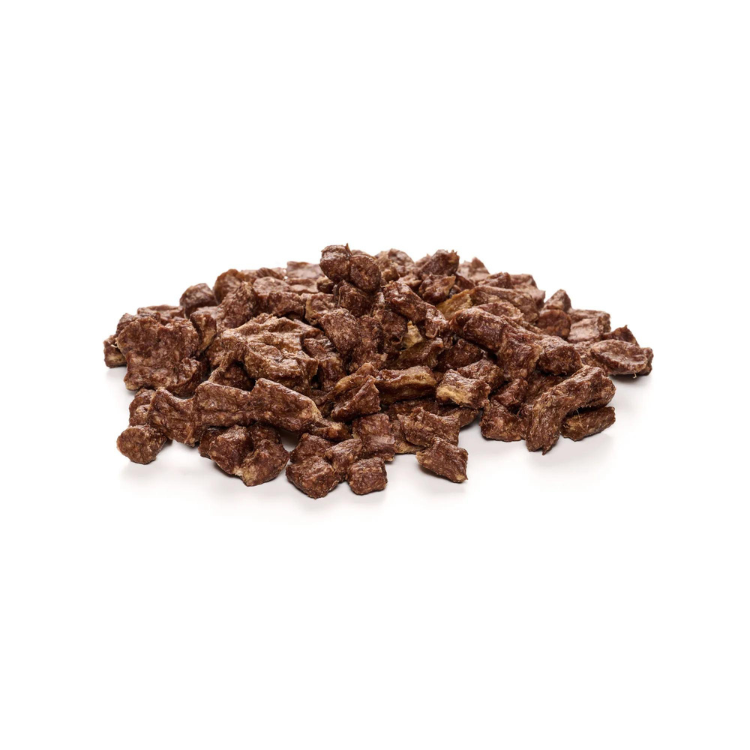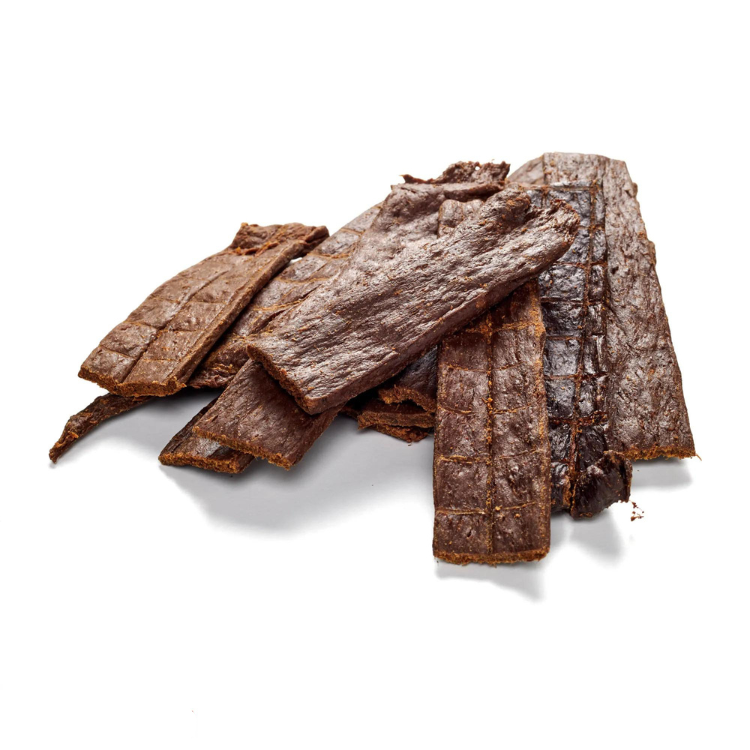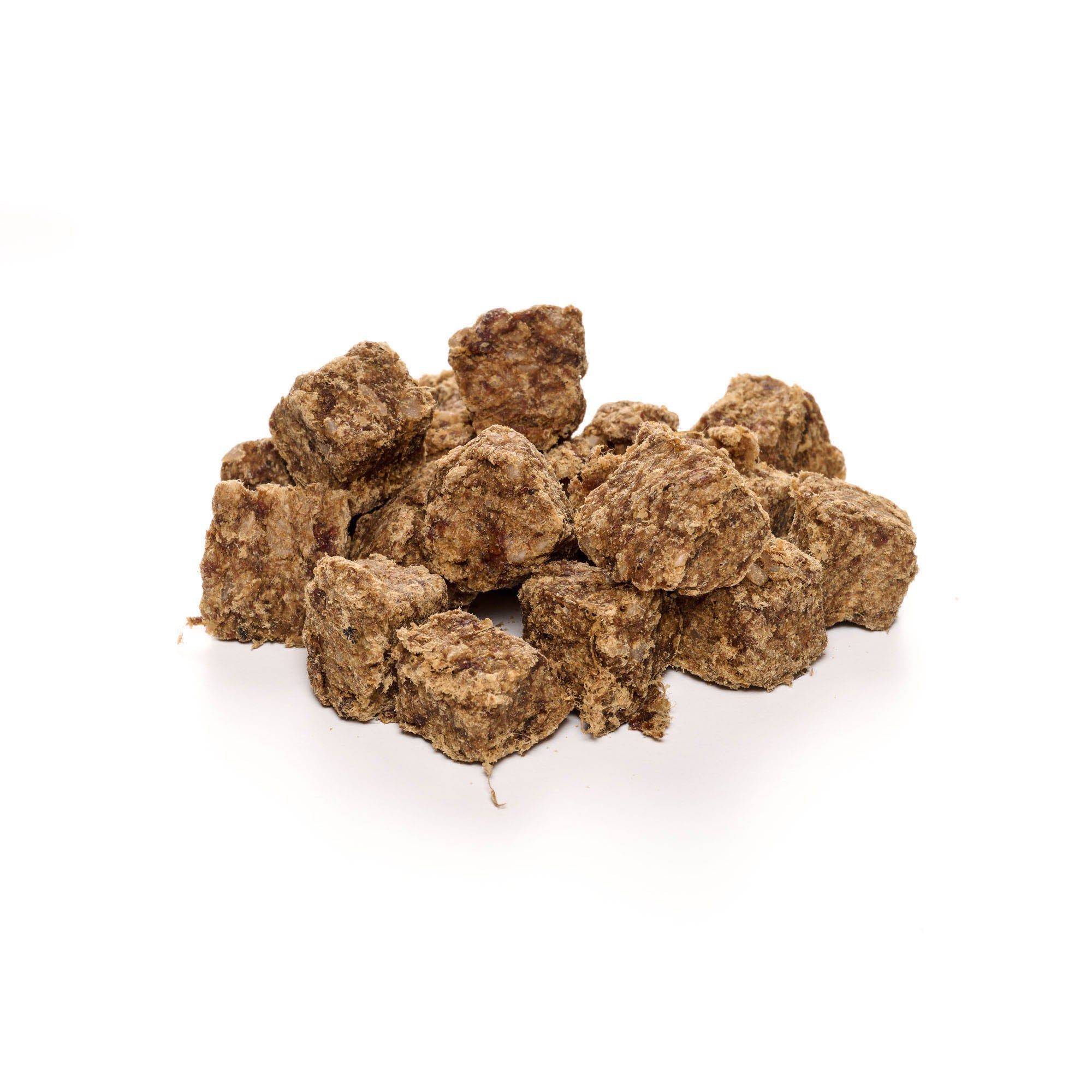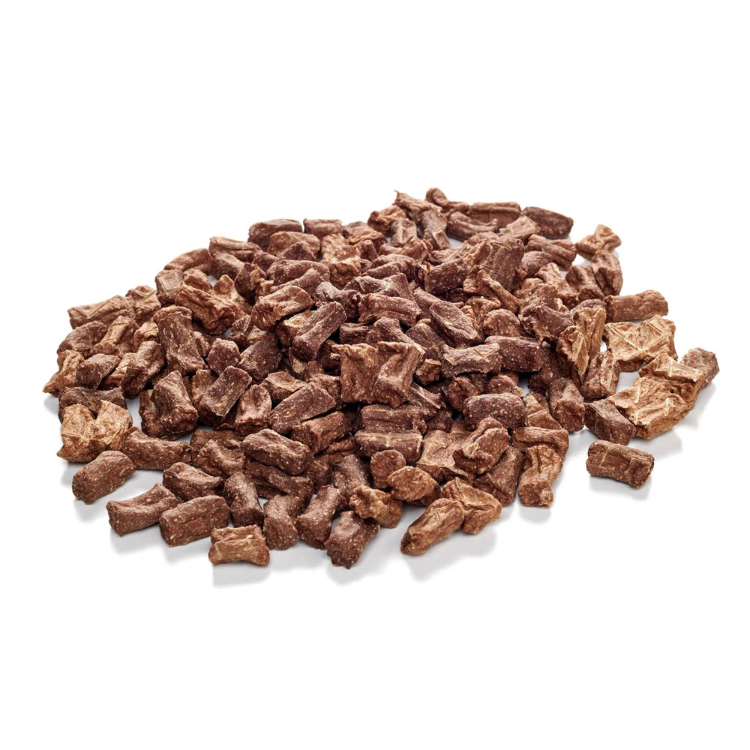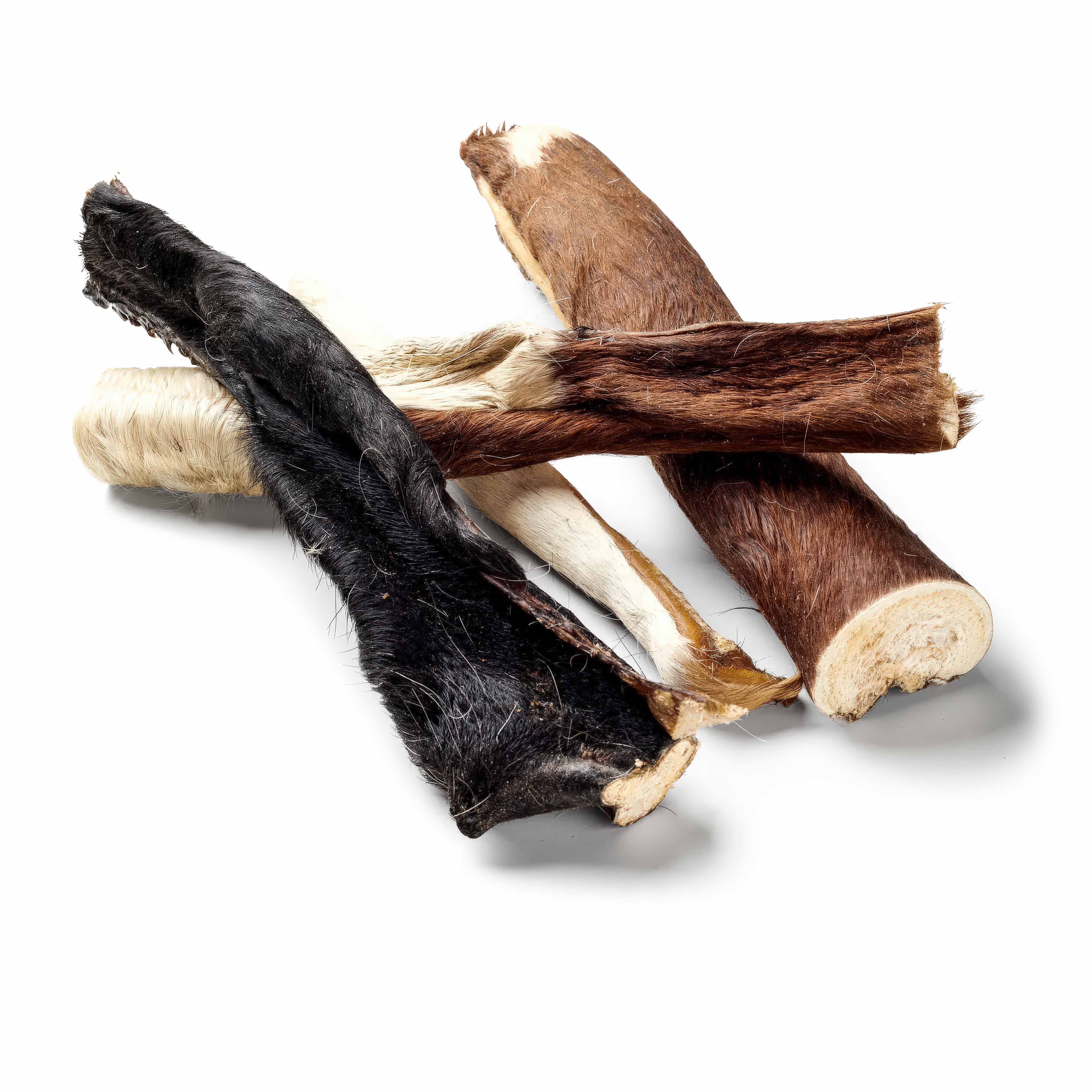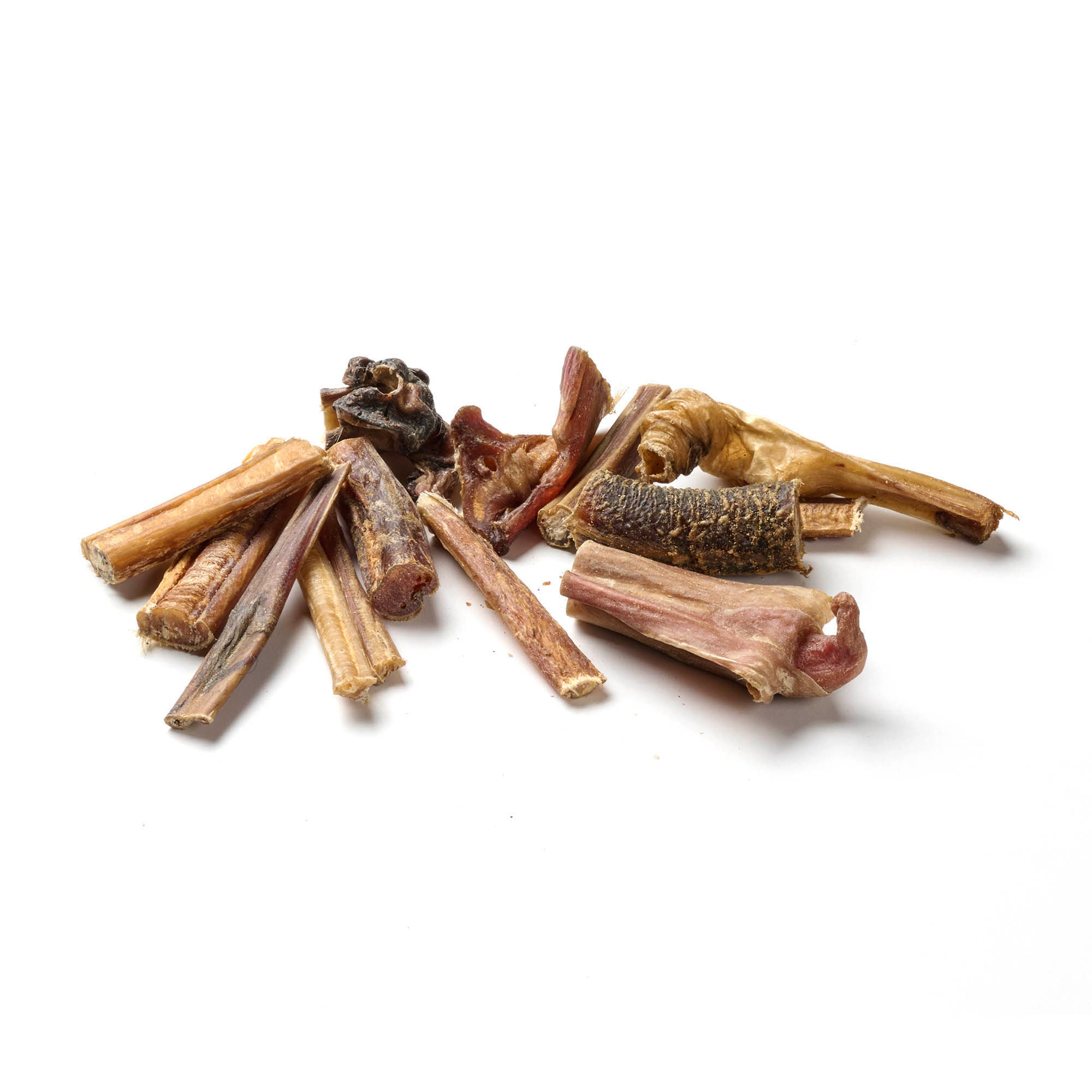
Heat in bitches
Share
Sometimes it happens quite suddenly: the otherwise calm dog becomes an adventurer, and the garden fence that previously seemed sufficient suddenly becomes a barely sufficient obstacle. The heat has started and with it a phase that turns dogs into true explorers. During this time, our four-legged friends are full of energy and a thirst for adventure - much to the amazement and sometimes concern of their human companions.
Content: Heat in bitches
- What is heat?
- Signs of heat
- Phases of heat
- Dealing with a female dog in heat
- Health aspects
- Heat and castration
- Myths and facts
- Conclusion
Make your dog happy with our tasty chews!
This special phase in a dog's life is characterized by hormonal changes and strong instincts. Suddenly the desire for freedom and the search for a potential partner are paramount. Human companions must now be particularly vigilant and supervise the dog well in order to avoid unexpected excursions and encounters - and ultimately unwanted offspring.
What is heat?
Heat is a fascinating time in a female dog's life when she prepares for reproduction. This phase is full of changes and important biological processes that are of great importance not only for the female dog herself but also for her human caregivers.
Definition of heat
Heat, also called estrus, is the time when a female dog is fertile and ready to mate. This phase usually occurs twice a year and lasts about three weeks. During this time, both physical and behavioral changes can be observed in the female dog, indicating that she is ready to produce offspring.
Biological background
Heat is controlled by a complex sequence of hormonal signals that prepare the body for a possible pregnancy. A key moment in this cycle is ovulation, the moment when the ovaries release one or more mature eggs. These eggs can be fertilized if the bitch meets a male during these fertile days.
Differences to other reproductive cycles in animals
In cats, ovulation is triggered by the act of mating. This means that the cat's ovaries release eggs when they mate. This mechanism ensures that eggs are only present when the probability of fertilization is high. This process is called induced ovulation.
In bitches, on the other hand, ovulation occurs independently of mating. This means that in bitches, the eggs are released on their own during the heat cycle, regardless of whether mating has taken place or not. This process is called spontaneous ovulation. This peculiarity requires the dog owner to closely monitor the signs and timing of heat in order to treat the bitch effectively and avoid unwanted pregnancies.
Males, on the other hand, do not have such a reproductive cycle; they are ready to mate all year round. However, their sexual activity may be subject to seasonal fluctuations, meaning they may be more active at certain times of the year than at others.
Signs of heat
A female dog's heat is characterized by significant physical and behavioral changes. These changes serve not only as signals of the beginning of the fertile phase, but also as indicators of the different stages of heat.
Physical changes
During heat, obvious physical changes occur, such as swelling of the vulva and the appearance of discharge. The discharge is often bloody at first and later becomes clearer during estrus, when the bitch is most fertile. These signs are important in recognizing the different phases of heat and allow you to plan and act accordingly.
Behavioral changes
Typical behavioral changes in a female dog in heat include restlessness and increased clinginess. The female dog also shows increased interest in male dogs and begins to mark more frequently, which serves as a communicative signal of her willingness to mate. These behaviors help to identify the female dog's sexual receptivity and can be crucial in avoiding unwanted encounters with male dogs.
Typical symptoms and their recognition
Heat manifests itself through a number of clear symptoms such as swelling of the vulva and bloody discharge, which are relatively easy to recognize. Behavioral changes such as increased irritability or increased urination are also important signs. The dog handler should recognize these changes early on in order to be able to support and protect his bitch appropriately during this time.
Phases of heat
A bitch's heat cycle is divided into four distinct phases, each characterized by specific biological and behavioral changes. These cyclical phases are crucial for understanding and managing the bitch's reproductive periods.
Proestrus (pre-heat)
The reproductive cycle begins with proestrus, a preparatory phase for the actual estrus.
- Duration and signs: About 7-10 days. The bitch's vulva swells and there is a bloody discharge. The bitch shows increased interest in male dogs, but is not yet ready to mate
- Behavior of the bitch: She may become more restless and affectionate, begins to mark more and shows a changed behavior towards male dogs, but usually remains dismissive
Estrus (heat)
In this phase, the willingness to mate reaches its peak.
- Duration and signs: Lasts about 5-9 days. The bloody discharge becomes clearer and the bitch is ready to mate.
- Behavior of the bitch: Obvious mating behavior, including raising the tail sideways and allowing the male to approach her. She can be very affectionate and restless.
Metestrus (post-heat)
After the estrus phase, the bitch begins to withdraw from her willingness to mate.
- Duration and signs: Approximately 60-90 days, depending on whether the bitch is pregnant or not. The vulva will shrink in swelling and the discharge will stop.
- Behavior of the bitch: Behavior gradually returns to normal and the willingness to mate disappears. During this phase, false pregnancies can occur.
Info: Pseudopregnancy in dogs is a condition in which a female dog shows signs of pregnancy after her heat cycle, even though she is not pregnant. This is caused by hormonal changes and can include symptoms such as enlarged mammary glands, nesting behavior, and milk production. In most cases, no treatment is required, but if the symptoms are severe, a veterinarian can help.
Anestrus (resting phase)
The longest phase in the cycle offers the bitch a time to recover and prepare for the next cycle.
- Duration and signs: About 4-5 months. There are no visible signs of reproductive activity.
- Behavior of the bitch: The bitch behaves as usual, without any special behavioral patterns of heat. This is a time of rest in which the body regenerates.
Dealing with a female dog in heat
Properly handling a female dog in heat is important for her health. This section provides important care tips and recommendations to help the owner make this special time as stress-free as possible.
Care tips and hygiene
During heat, the bitch needs special hygienic attention. It is important that the area where the bitch is staying is cleaned regularly to prevent infections and to ensure a clean environment. The use of special protective panties - a diaper, so to speak - is also an effective measure to maintain cleanliness. They catch the discharge and prevent furniture or flooring from becoming dirty.
High quality dog snacks to pamper your dog, now available!
Behavioral tips for owners
Patience and understanding are important during this time. A female dog in heat may exhibit behavioral changes that can range from increased clinginess to irritability. It is important to be sensitive to these changes and to provide the dog with additional comfort. This includes providing her with a quiet place to retreat to where she can relax and avoiding stressful situations such as large crowds or noisy environments.
Ways to prevent unwanted pregnancies
Careful monitoring of a female dog in heat is crucial to preventing unwanted pregnancies. Owners should limit their female dog's contact with male dogs as much as possible. This can be achieved by carefully controlling walking times and locations, especially during the most fertile days of estrus. In addition, securing your own garden or yard with a secure dog fence can help prevent unexpected encounters. If breeding is not planned, early spaying or neutering may also be considered to avoid the challenges of heat altogether.
Health aspects
The health of a female dog in heat requires special attention, as various complications can arise during this time. Careful observation and proactive care are crucial to maintaining the dog's health.
Possible complications during the heat
During heat, a variety of health problems can arise, including infections such as pyometra, a severe infection of the uterus, or as mentioned above, false pregnancies, where the dog shows signs of pregnancy without actually being pregnant. These conditions can be both physically and emotionally stressful for the dog. Owners should watch for signs such as unusual discharge, apathy or changes in eating behavior and seek immediate veterinary attention if they suspect anything.
When to see a veterinarian
It is important to seek immediate veterinary attention if any unusual behavior or health symptoms occur during heat. These include persistent lethargy, excessive vaginal discharge, especially if it is purulent or fetal, and signs of pain or discomfort. Early intervention by a specialist can prevent serious health problems and speed up the dog's recovery.
Prevention and precaution
Regular veterinary checkups are important to monitor the health of a female dog in heat. Good care, including appropriate diet, hygiene and exercise, can help minimize health problems. Owners should also keep their dog's vaccinations and parasite protection up to date and follow veterinarian recommendations to support the dog's overall health and well-being during heat.
Castration and sterilization
The decision to spay or neuter a female dog should be carefully considered. Both procedures can have health benefits and affect the dog's behavior. It is important to consider both the pros and cons, as well as the ideal timing for these procedures.
Advantages and disadvantages of castration
Spaying a female dog has health benefits such as preventing unwanted pregnancies and reducing the risk of certain cancers, including ovarian and uterine cancer. It can also minimize the risk of pyometra, a serious infection of the uterus. However, there are disadvantages that must be considered. There is a risk of surgical complications and possible changes in the dog's metabolism, which can lead to weight gain and personality changes. Therefore, the decision to spay should be made after careful consideration of all medical and behavioral aspects.
Advantages and disadvantages of sterilization
Sterilization prevents reproduction but does not affect the female dog's hormone levels. This preserves the cycle of heat, meaning the female dog will continue to come into heat. Advantages of sterilization are that it is less invasive and the risks and complications are lower. Disadvantages are that it does not provide any of the hormonal benefits of spaying, such as reducing the risk of cancer or preventing pyometra.
Effects of castration on estrus
Castration permanently ends the heat cycle. This has a direct impact on the hormonal balance and behavior of the bitch. After castration, behaviors associated with heat, such as restlessness or marking, often decrease. These changes can help make living with the bitch easier and more predictable.
Timing and considerations for castration
The optimal timing for spaying can vary depending on the breed, size and health of the bitch. Traditionally, spaying is recommended before the first heat to minimize the risk of certain health problems. However, recent studies show that timing should be individualized to maximize long-term health benefits. A comprehensive consultation with a veterinarian is essential to make the best decision for the bitch's health.
Nutrition and support during heat
A good diet is especially important during heat to support the well-being of the bitch. The right nutrients can help to better cope with the physical changes and challenges of this time.
During heat, the dog's appetite may fluctuate. It is important to feed her high-quality food that is rich in protein and healthy fats. These nutrients give her energy and support her immune system. Omega-3 and Omega-6 fatty acids are particularly useful for reducing inflammation. Suitable chews that provide these nutrients include:
- Salmon skin chews: Salmon skin strips are rich in omega-3 fatty acids and support the health of skin and coat
- Beef Scalp: A natural chew available in various forms such as beef scalp, long or beef scalp slabs - and is rich in protein.
- Chicken feet: Chicken feet are a good source of natural fats and proteins.
- Rabbit ears with fur: No longer sweet, but delicious, are rabbit ears with fur . They are also rich in fiber and protein, good for digestion and dental care
- Dried beef strips: Beef strips are rich in protein and easily digestible, ideal for a healthy diet
By adjusting the diet and providing suitable chews, we can help our bitches to get through heat healthily and happily. A good diet makes a big difference and helps them to get through this special time better.
Myths and facts
There are many myths and misconceptions surrounding the female dog's heat cycle that can lead to confusion and mistreatment. It is important to clear up these myths and back them up with scientifically based information. So let's take a closer look at some common misconceptions and the actual facts.
Common misconceptions about heat
There are many myths surrounding heat. For example, some people believe that a female dog must be mated every time she is in heat in order to maintain her health. This is of course complete nonsense! Another common misconception is that a female dog should become pregnant at least once in her life. However, there is no scientific evidence to support this myth. The lack of pregnancy has no negative effects on the dog's health.
Another common misconception is that spaying always leads to behavioral problems. While some bitches may show behavioral changes after spaying, spaying does not necessarily lead to problems. Often, problematic behaviors associated with heat are even reduced.
Many people also think that a female dog bleeds heavily throughout the entire heat cycle. In fact, bleeding is usually only heavy during the first few days, after which the intensity decreases. In addition, heat is not always easy to recognize, as the signs can be subtle, especially in the early stages. Owners should therefore pay attention to changes in behavior and physical signs.
Good information helps to avoid such misunderstandings and to provide the bitch with the right care. Correct information about the cycle and the needs of a bitch in heat is crucial for her health.
Conclusion
Heat is a special time in a dog's life that brings with it many changes and challenges. As human companions, it is our job to understand these phases and support our dogs as best as possible. With attention and the right care, we can ensure that our dogs get through this time healthy and happy.
An important decision that many of us have to make is the question of spaying. Spaying can bring many health benefits, but it is important to carefully weigh all the pros and cons. An open and thorough discussion with the vet will help us make the best decision for our dog.
It is also helpful to break away from common myths and rely on scientifically based information. This way we can avoid misunderstandings and focus on the actual needs of our dog. Ultimately, knowing about heat strengthens our relationship with our dog and helps us to accompany her lovingly and responsibly.
Make your dog happy with our tasty chews!

